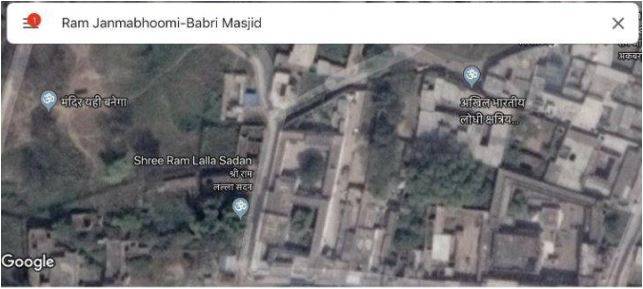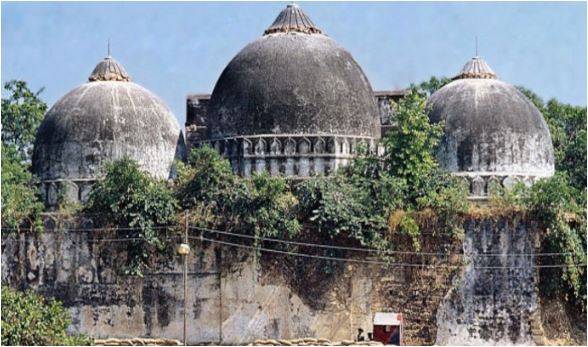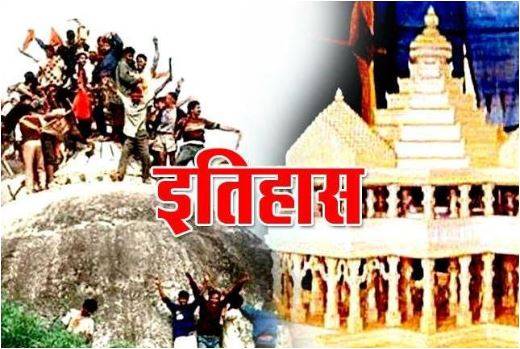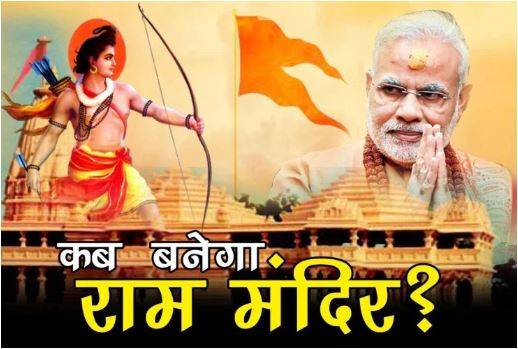Ram Mandir News Daily Update December 2025
Here You will get latest happening of Ayodhya Ram Mandir News. After Ram Mandir Verdict ended in favor of Hindus by Supreme Court. The Ram Mandir Construction has started. This was one of the Prime objective of BJP during Election Voting Campaign.
Ram Mandir Status can be checked from here. When will Ram Mandir construction Complete is a question now.
Ram Mandir Verdict
The Case ended in favor of Ram Mandir Devotees. The Trust has begun Constructing Ram Mandir. Supreme Court has made verdict in the case. There is now no more issues in case.
The temple construction officially started again after a ground-breaking ceremony on 5 August 2020. Three-day long Vedic rituals were held ahead of the ground-breaking ceremony.
It revolved around the installation of a 40 kg silver brick as the foundation stone by the Prime Minister of India, Narendra Modi.[2] On 4 August, the Ramarchan Puja was performed, an invitation to all the major gods and goddesses
What is the cause of Ram Mandir Dispute ?
The Ayodhya dispute is a political, historical and socio-religious debate in India, centred on a plot of land in the city of Ayodhya, located in Ayodhya District, Uttar Pradesh.
The main issues revolve around access to a site traditionally regarded among Hindus to be the birthplace of the Hindu deity Rama, the history and location of the Babri Mosque at the site, and whether a previous Hindu temple was demolished or modified to create the mosque.
Disclaimer:- Information on this is collected from many sources. So,we are not responsible. we are just provide new updates about this. If you think any data given here is inappropriate then comment below in the comment section. Thank-you
Ram Janmabhoomi
The Ayodhya debate centres around the land known today as Ram Janmabhoomi, on which the Babri Mosque was built in 1528. In the Ramayana, Ayodhya is the birthplace of the god-king Rama, the son of Dasharatha, the ruler of Ayodhya, and his queen Kausalya. He is worshiped by many Hindus as an Avatar, or incarnation, of Vishnu.
According to the Garuda Purana, a Hindu religious text, Ayodhya is one of seven sacred sites where Moksha, or a final release from the cycle of death and rebirth, may be obtained.

Babri Masjid
In 1525, the Mughal king Babur invaded north India, and conquered a substantial part of northern India. One of his generals, Mir Baqi came to Ayodhya in 1528 and after reportedly destroying a pre-existing temple of Rama at the site, built a mosque, which has come to be called masjid-i-janmasthan (mosque at the birthplace) as well as Babri Masjid (Babur’s mosque).
The Babri Mosque was one of the largest mosques in Uttar Pradesh, a state in India with considerable Muslim population. Both the Hindus and Muslims are said to have worshipped at the “mosque-temple,” Muslims inside the mosque and Hindus outside the mosque but inside the compound. After the British took over the State, they put up a railing between the two areas to prevent disputes.

Ram Mandir News Daily Update, Breaking News, Next Hearing Date December 2025:-
Check on Supreme Court Website at https://www.sci.gov.in/case-status
Popular Personalities Opinion on Ram Mandir Dispute
Amit Shah:- Amit Shah said construction of Ram temple in Ayodhya will start before 2019 polls, claims BJP leader.
Narendra Modi:- PM Modi breaks silence on Ram Mandir, says Congress forcing Supreme Court to delay hearing.
Yogi Aditya Nath:- Mandir tha, hai aur rahega: Yogi Adityanath on Ram temple in Ayodhya.
Beginnings of dispute : Ram Mandir News Daily Update
The first recorded instances of religious violence in Ayodhya occurred in the 1850s over a nearby mosque at Hanuman Garhi. The Babri mosque was attacked by Hindus in the process.
Since then, local Hindu groups made occasional demands that they should have the possession of the site and that they should be allowed to build a temple on the site, all of which were denied by the colonial government.
In 1946, an offshoot of the Hindu Mahasabha called Akhil Bharatiya Ramayana Mahasabha (ABRM) started an agitation for the possession of the site.
In 1949, Sant Digvijay Nath of Gorakhnath Math joined the ABRM and organised a 9-day continuous recitation of Ramcharit Manas, at the end of which the Hindu activists broke into the mosque and placed idols of Rama and Sita inside.
People were led to believe that the idols had ‘miraculously’ appeared inside the mosque. The date of the event was 22 December 1949.
Babri Masjid demolition case: From 1528 to 2017

On December 6, 1992, a large crowd of Hindu ‘karsevaks’ demolished the Babri Masjid in Ayodhya. The demolition occurred after a political rally at the site turned violent.
Here is the sequence of events related to the case so far:
December 5, 2017: Supreme Court defers the commencement of final hearing in the Ayodhya dispute matter to February 8, 2018. The stakeholders had moved the SC after the Allahabad High Court directed the Sunni Waqf Board, the Nirmohi Akhara and the Lord Ram Lalla to settle for a three-way division of the disputed site.
August 11, 2017: Supreme Court schedules hearing of 13 appeals in the Ramjanmabhoomi-Babri Masjid title dispute on December 5, 2017, the eve of the 25th anniversary of the demolition of the 15th century mosque.
August 8, 2017: Uttar Pradesh Shia Central Waqf Board informs the Supreme Court that they would settle for a masjid located in a “Muslim-dominated area at a reasonable distance from the most revered place of birth of Maryada Purushottam Sri Ram.”
May 30, 2017: Senior BJP leaders LK Advani, Murli Manohar Joshi, Uma Bharti and Vinay Katiyar charged with criminal conspiracy in the Babri Masjid demolition case.
April 19, 2017: Supreme Court revives conspiracy charges against LK Advani, Murli Manohar Joshi and 13 others in the 25-year-old Babri Masjid demolition case.
April 6, 2017: Supreme Court indicates it will use its extraordinary powers under Article 142 of the Constitution to transfer the Babri Masjid demolition related trial in Rae Bareilly against top BJP leaders LK Advani and Murli Manohar Joshi to Lucknow, where a CBI court was hearing conspiracy and other serious criminal charges against “lakhs of unknown kar sevaks” for the actual act of razing down the 15th century mosque.
March 23, 2017: A Supreme Court Bench of Justices PC Ghose and Rohinton Nariman posted for detailed hearing the CBI appeal against the dropping of the criminal conspiracy charge against veteran BJP leader LK Advani and other top party leaders after two weeks.
March 21, 2017: Suggesting an out-of-court rapprochement among rival parties in the 68-year-old Ramjanmabhoomi-Babri Masjid title dispute, Chief Justice of India JS Khehar advises peace negotiations instead of a pitched court battle, even offering help to settle the fight amicably.
February 26, 2016: The Supreme Court permitted BJP leader Subramanian Swamy to intervene in the pending matters related to the Ayodhya dispute with his plea seeking construction of Ram temple at the site of the demolished disputed structure.
December 25, 2014: Mohammad Farooq, the oldest litigant in Babri Masjid case passes away. Farooq, a resident of Ayodhya, was one of the seven main litigants from Muslim side in the 1949 Babri Masjid case.
May 9, 2011: Supreme Court stays Allahabad High Court verdict on Ayodhya dispute.
February, 2011: CBI moves Supreme Court, argues that “the actual demolition of the Babri Masjid and the continuous assault on media persons form a single connected transaction and can well be a concerted conspiracy.”
September 30, 2010: The Allahabad High Court distributes the 2.77 acres of the Babri Masjid-Ram Janmabhoomi site into three parts, giving each to Nirmohi Akhara sect, the Sunni Central Wakf Board, UP, and Ramlalla Virajman.
September 28, 2010: Supreme Court rejects petition for deferment and gives the nod to the Allahabad High Court to deliver the judgment. The High Court chooses September 30 as verdict day.
September 23, 2010: The plea for an out-of-court settlement reaches Supreme Court and the apex body says it would hear it again on September 28.
July 26, 2010: The bench reserves its judgment and advised all parties to solve the issue amicably. But no one was keen.
June 30, 2009: The Liberhan Commission, constituted soon after the Babri Masjid demolition by the P.V. Narasimha Rao-led government, submits its report. In its report, retired High Court Judge MS Liberhan concluded that several BJP leaders had a role in the incident.
July 2005: Suspected Islamic militants attacked the disputed site, using a jeep laden with explosives to blow a hole in the wall of the complex. Security forces killed five people they say are militants, and a sixth who was not immediately identified.
Nov 2004: Uttar Pradesh court ruled that an earlier order which exonerated Mr. Advani for his role in the destruction of the mosque should be reviewed.
Oct 2004: Mr. Advani said his party still had commitment to build a temple at Ayodhya.
August 31, 2003: All India Muslim Personal Law Board says it would challenge the ASI report.
August 22, 2003: ASI submits its report to the Allahabad High Court, saying it had found features of a 10th century temple beneath the site of the masjid.
March 5, 2003: The Allahabad High Court orders the Archeological Survey of India (ASI) to excavate the disputed site in order to determine whether a temple existed where the mosque stood.
Apr 2002: Three High Court judges began hearings to decide who owned the religious site.
Mar 2002: Between 1,000 and 2,000 people, mostly Muslims, died in riots in Gujarat following the train attack.
Feb 2002: BJP backed out from the construction of a temple in its election manifesto for Uttar Pradesh assembly elections. VHP confirmed deadline of 15 March to begin construction. Hundreds of volunteers converged on site. A train returning from Ayodhya carrying Hindu activists was attacked in Godhra and 58 people were killed.
Jan 2002: Atal Bihari Vajpayee set up an Ayodhya cell in his office and appointed a senior official, Shatrughna Singh, to negotiate with Hindu and Muslim leaders.
May 4, 2001: Special Judge SK Shukla drops conspiracy charge against 13 accused, including Advani and Kalyan Singh. Bifurcates Crimes 197 and 198. Allahabad HC upholds May 4, 2001 special court order, dismisses the CBI’s revision petition for a direction to proceed with the conspiracy charge against Advani and others.
1998: BJP formed coalition government under Prime Minister Atal Behari Vajpayee.
December 6,1992: The disputed structure was brought down by kar sevaks and a makeshift temple was placed in its place. The PV Narasimha Rao-led Congress government then moved court for status quo.
November 1990: Advani’s rath is stopped and he is arrested in Samastipur, Bihar. Dissatisfied with the development, the BJP withdraws its support to the VP Singh government, triggering fresh elections. The saffron party makes giant strides in the assembly elections by winning a majority.
September 25,1990: Advani launches a rath yatra (pilgrimage procession) from Somnath to Ayodhya to galvanise support for the issue countrywide.
1989: Then Prime Minister Rajiv Gandhi allows shilanyas or a ground-breaking ceremony in an undisputed site close to the structure. The hearing of the case is subsequently shifted to the High Court.
February 1, 1986: Faizabad district judge orders the gates of the structure be opened for Hindus to offer prayers. Babri Masjid Action Committee is formed soon after this.
1984: The Vishwa Hindu Parishad constitutes a group to continue the movement as BJP leader L K Advani is made the leader of the campaign.
1961: Sunni Central Board of Waqfs in Uttar Pradesh files a case claiming the mosque, and argues that the surrounding area was a graveyard.
1959: Nirmohi Akhara, one of the main parties to the dispute, and others file a case and sought permission again to conduct prayers.
1950: Mahant Paramhans Ramchandra Das, the chief of Ram Janmabhoomi Nyas, and Gopal Singh Visharad file suits in Faizabad, seeking permission to pray before the installed idols. The puja was allowed though the inner courtyard gates remain locked.
1949: Towards the end of December 1949, idols of Lord Ram appeared inside the mosque, allegedly put there by Hindus. It led to widespread protests and both communities filed cases, Hashim Ansari for Muslims and Mahant Paramhans Ramchandra Das for Hindus. The government declared the site as disputed and locked the gates to it.
1859: British colonial administration built a fence to separate the places of worship, allowing the inner court to be used by Muslims and the outer court by Hindus.
1853: First recorded incidents of religious violence at the site.
1528: The Babri Masjid, a mosque in Ayodhya, is constructed by Mir Baki on the orders of Mughal emperor Babar. According to the Hindu community, it is built on the foundations of a temple which marked the birthplace of Lord Ram in Ayodhya. This contention lingered on for several years.
Tags- Ram Mandir Supreme Court Update, Ram Mandir New Update, Ayodhya Ram Mandir New Update, Ram Mandir Case next hearing Date, People saying about Ram Mandir, ram mandir case last update.
Ayodhya ram mandir history, ram mandir issue, ram mandir video, ram mandir news, ayodhya ram mandir history in hindi, ram mandir ayodhya photo, ram mandir voting, ayodhya ram mandir wallpaper.
Ram mandir ka samachar, ram mandir ka samachar aaj ka taja, ram mandir status, ram mandir ka nirman, babri masjid news, babri masjid ram mandir, babri masjid or ram mandir.
We hope you have enjoyed our work, if you liked it Please help us reach more people like You. Share this article with your Friends using below buttons. Sharing is Caring 💗







